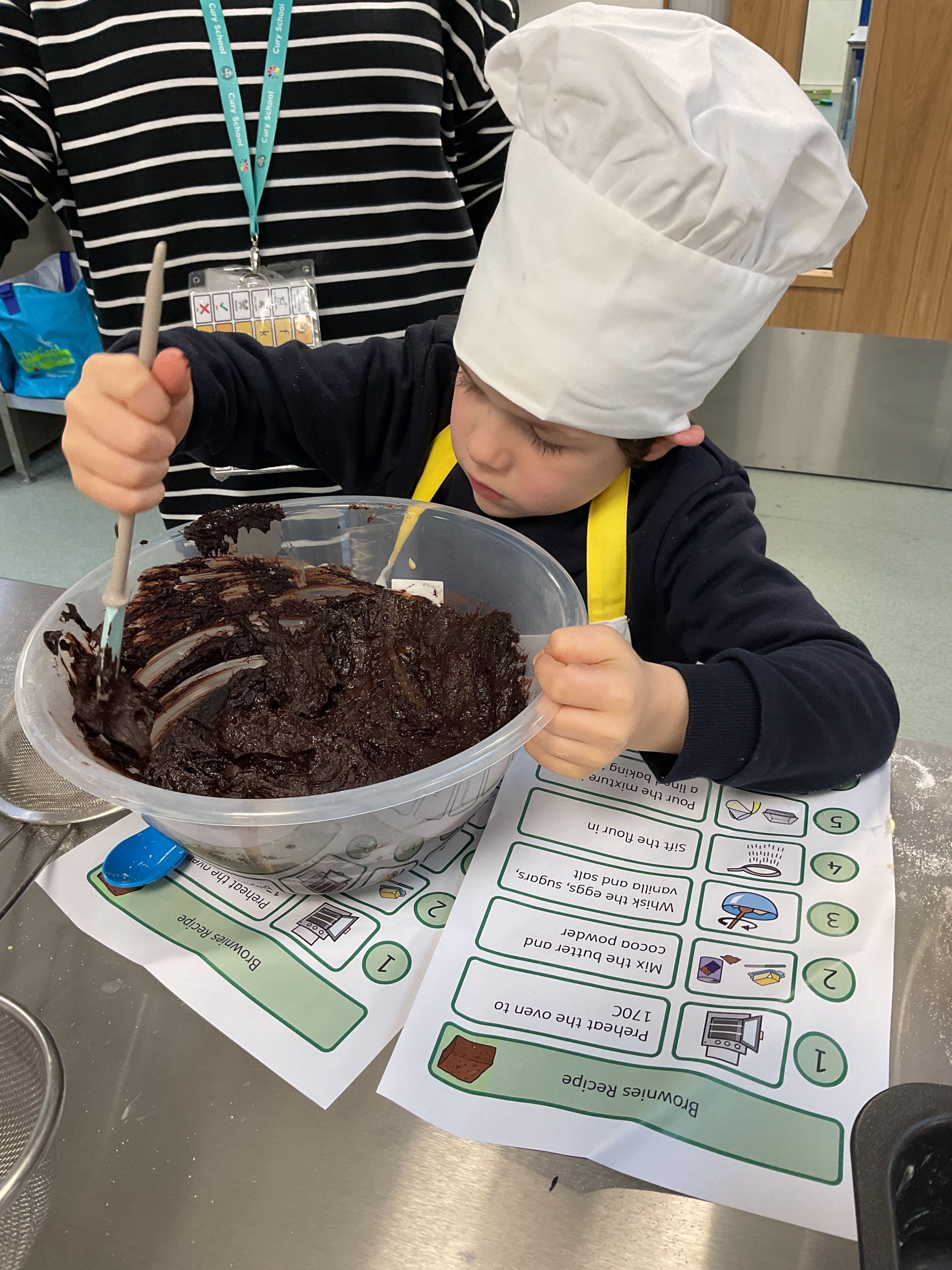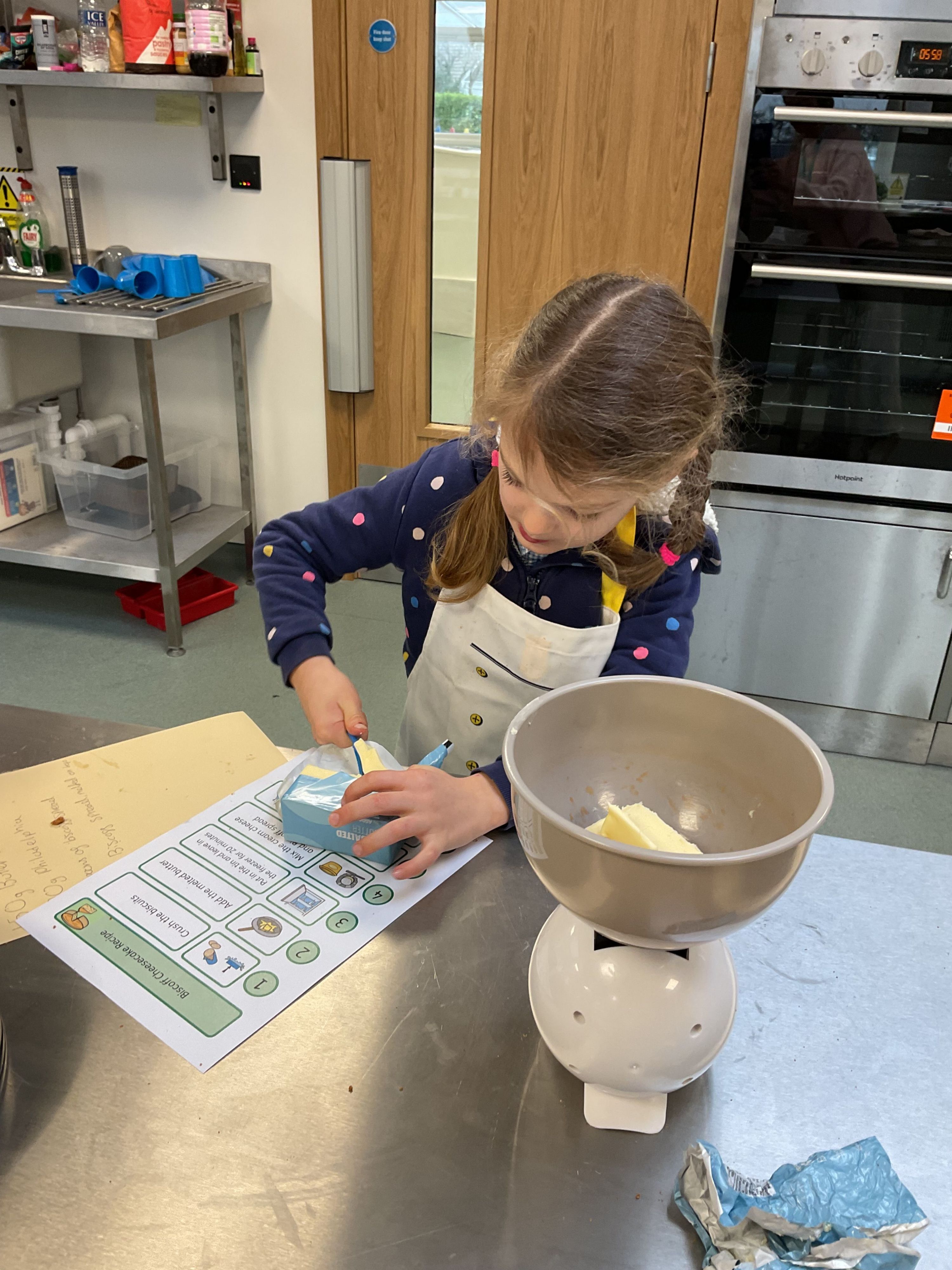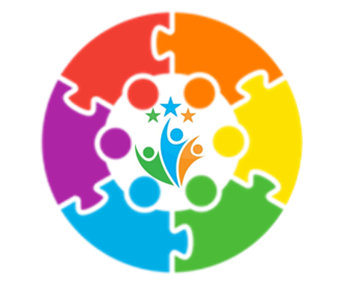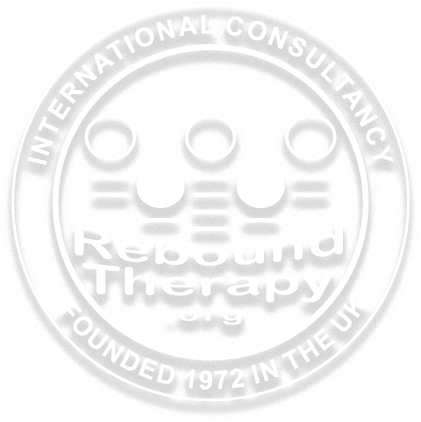Communication
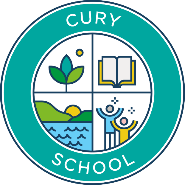
![]()
At Cury School, we prioritise the development of communication skills as we believe every child deserves a voice. We aim to provide our pupils with the skills, support, resources and opportunities they need to communicate effectively. Helping students develop effective communication skills plays a critical role in improving emotional regulation, social relationships, self-esteem, and overall mental health. We intend to provide our pupils with the skills and tools they need to communicate in a way that ensures their voices can be heard. We thrive to create an environment where all pupils can effectively regulate their emotions and express their needs both verbally and non-verbally. This approach aims to reduce feelings of frustration, isolation or confusion that may arise from students’ inability to express themselves effectively. By developing communication skills, pupils will gain confidence in their ability to engage in healthy social interactions and therefore form and maintain positive social relationships. Our intent is to support students in learning not just how to speak or sign, but also how to listen, engage in turn-taking, and interpret social cues. With our communication offer, we aim to enhance the quality of education and offer an inclusive and enhanced curriculum where all pupils are encouraged to progress and thrive. Our holistic approach to communication aims to empower students, supporting them in their academic, social, and emotional development, and ultimately helping them to build relationships and navigate the world more effectively.

![]()
Universal Offer – Pathway 1
Environment – Access to an environment where communication can thrive
Cury will provide a total communication environment and approach to learning, where a combination of communication methods are used to enhance understanding and communication opportunities throughout the school day. This includes the use of:
-
Carefully structured days, where visual, verbal, auditory and tactile prompts, support understanding, routine and security.
-
Organised environments where access to communication opportunities are planned for, available throughout the school day and modelled by staff, including symbol exchange, core-boards, communication books and high tech AAC communication devices.
-
Information shared is done so using a range of communication strategies ensuring all communication needs are considered e.g. verbal information is supported by Makaton, photo/symbol/object, a sensory representation.
Communication strategies and resources embedded in everyday practice
Cury will embed strategies and resources to ensure the communication needs of all learners can be met. This is linked to the tiered approach to teaching and learning, and consideration of needs while individual also considers the wider groups of: Learning to learn, Bridging to Learn and Ready to learn. The strategies and resources for these groups are outlined below:
Learning to Learn/Engagement
-
Intensive Interaction
-
Object, photo and symbol use
-
A specialist multi-sensory approach
-
The engagement model embedded
-
Use of Low-tech and high tech AAC including Eye Gaze
-
Daily early visual, auditory and phonics sessions
Bridging to Learn/Discovery
-
Attention Autism
-
Intensive Interaction
-
Makaton
-
Elklan strategies embedded, including careful consideration of word level and blank level understanding
-
Object, photo and symbol use
-
A specialist multi-sensory approach
-
The engagement model embedded
-
Use of Low-tech and high tech AAC including communication Apps
-
Social communication strategies embedded
-
Robust early reading and phonics strategy (Read Write Inc Phonics)
-
Early writing strategies embedded, including colourful semantics
Ready to Learn/Exploration
-
Attention Autism
-
Intensive Interaction
-
Makaton
-
Elklan strategies embedded, including careful consideration of word level and blank level understanding
-
Object, photo and symbol use
-
Use of Low-tech and high tech AAC including communication Apps
-
Social communication strategies embedded
-
TIS ethos embedded
-
Skills Builder approach embedded
-
Robust early reading and phonics strategy (Read Write Inc Phonics)
-
Early writing strategies embedded, including colourful semantics
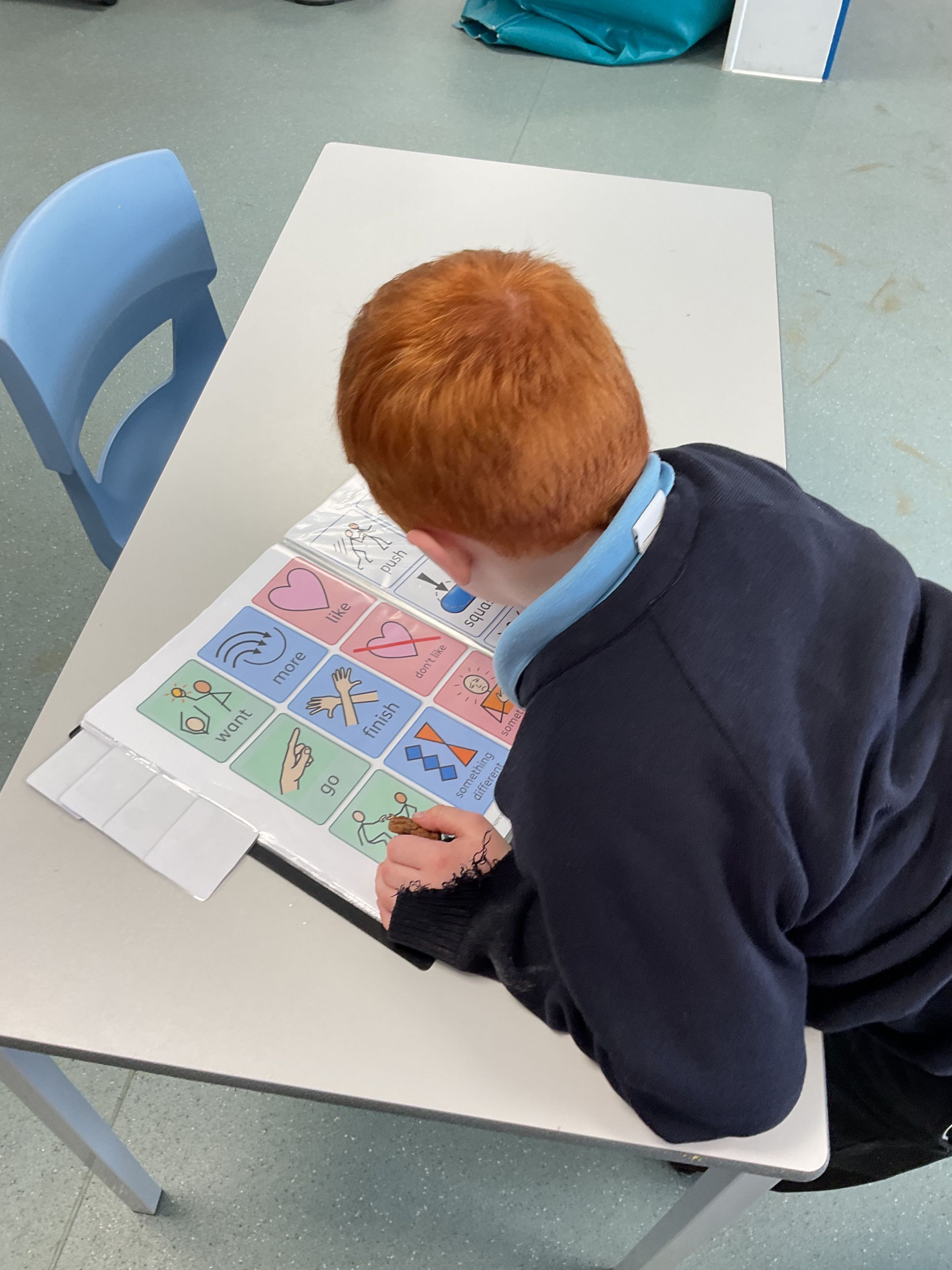
Skilled Staff
Ongoing training will be available to ensure the highest standards and expertise in maintained in whole school practice. Training will include:
-
Elklan – Language Builders
-
Makaton / BSL
-
Intensive Interaction
-
Attention Autism
-
TIS
-
PECS
-
AAC Modelling and managing
Identifying and reviewing of communication needs
-
All young people attending will have an Education health Care Plan (EHCP) in place.
-
Initial assessment will identify communication strengths and needs. All EHCPs will include communication outcomes within their areas of need and resourcing to meet these needs.
-
Communication needs will be assessed and reviewed as part of the annual review process, which includes amending outcomes and setting annual targets.
-
Termly communication targets will be set for all learners. Evidence collected and progress towards this target reviewed on a half termly basis.
Families
-
Strategies developed in school will be shared with home, including any physical resources needed.
-
Regular training will be provided to parents including Makaton, AAC skills and using symbols-based communication systems.
-
A family liaison team is available to support parents with ongoing needs.
-
Daily communication between school and home.
Identifying and reviewing of communication needs
-
All young people attending will have an Education health Care Plan (EHCP) in place.
-
Initial assessment will identify communication strengths and needs. All EHCPs will include a communication outcome within their areas of need and resourcing to meet these needs.
-
Communication needs will be assessed and reviewed as part of the annual review process, which includes amending outcomes and setting annual targets.
-
Termly communication targets will be set for all learners. Evidence collected and progress towards this target reviewed on a half termly basis.
In School Specialist Intervention Offer – Pathway 2
Pathway 2 learners will be identified by the school as having additional therapeutic needs above and beyond the resourcing levels offered within the school’s holistic approach outlined for Pathway 1 learners. At this stage, the school will refer individual learners to the Specialist Intervention Team. This Team will be made up of the following specialists across the SPT:
-
A Speech and Language Therapist (employed by the SPT 0.6)
-
An Occupational Therapist (employed by the SPT 0.6)
-
A Specialist Intervention Lead in each school
-
A Specialist Intervention Assistant employed full time in each school
Once a referral has been made to the Specialist Intervention Team, the following provisions will be available to support the needs of the individual learners:
-
An assessment of need to be completed by the SPT SALT/OT
-
An intervention plan to be developed by the SPT SALT/OT
-
SALT/OT to share intervention plans with the school’s Specialist Intervention Lead and Assistant
-
Support package to be developed and coordinated with the class teacher (timetabled intervention, both in class or on a 1:1 basis)
-
Resources ordered/developed and shared
-
Evidence gathered and shared (using EFL)
-
Evidenced used to inform referral to external support agencies
The support offered within Pathway 2 is designed as short-term interventions that will lead towards one of two outcomes; the intervention will meet the learner’s short term needs and they will return to Pathway 1; or the intervention will collect evidence to support a referral for additional support from external agencies and the learner will progress to Pathway 3.
External Support - Pathway 3
Pathway 3 learners will have access to external professional support as indicated in their EHCP. Some students may remain on Pathway 3, due the nature of their ongoing needs, while others will access the Pathway as needs change and developments are made. The Specialist Intervention Team will enhance the provisions and support designed by the external agencies. Learners accessing Pathway 3 will receive the following support to meet their individual needs.
-
A therapy assessment and plan completed by external professional e.g. SALT
-
Allocated sessions with the external professional
-
Regular reporting from the external professional
-
External professional to share intervention plans with the SPT’s SALT/OT (where appropriate) and school’s Specialist Intervention Team
-
Support package to be developed and coordinated with the class teacher (timetabled intervention, both in class or on a 1:1 basis)
-
Resources ordered/developed and shared
-
Evidence gathered and shared (using EFL)
-
Evidenced shared with external professional to ensure progress and to inform report writing and next step planning
The enhanced levels of support offered by the SPT’s Specialist Intervention Team, will ensure a consistent and cohesive approach to the individual support needed. Regular communication and robust evidence will both ensure progress and ensure a rapid response to any changes of need.
The support offered within Pathway 3 is often ongoing and learners may remain on this pathway throughout their school life. However, for some pathway 3 may offer an intervention to meet the learner’s short-term needs and they will return to Pathway 2. Changes and development may then be made within Pathway 2 requiring a further referral for external support, where learners will again access Pathway 3.
![]()
Our approach to communication in a supportive environment allows pupils to gain confidence in their ability to communicate, both with peers and adults. Every pupil feels heard, understood and validated as they are equipped with the tools needed to express themselves and connect with others confidently. Pupils learn to communicate their feelings, consent and articulate emotions effectively leading to reduced frustration, withdrawal, anxiety and dysregulation. Pupils are also able to navigate conflicts more effectively by expressing their needs, set boundaries, and negotiate with others in a calm and constructive way. As pupils learn to listen attentively, take turns and express themselves, they can engage in meaningful conversations and have a better understanding of the emotions and perspectives of others. This means pupils build friendships, collaborate with peers, and feel a sense of belonging within our school community. The impact of our communication model extends to academic success. Pupils feel confident in their ability to ask for help and contribute to group activities and are therefore more engaged in their learning. This increased engagement leads to improved academic outcomes and pupils are able to demonstrate their understanding through verbal, non-verbal and written expression.
